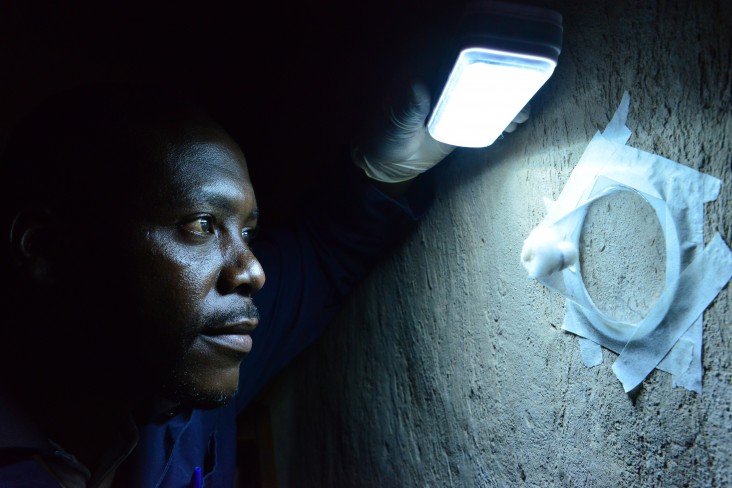Speeches Shim

OVERVIEW
USAID supports the health sector with high-impact, evidence-based interventions. Most interventions in the health sector are at the county level with only targeted support at the national level. We work with the Government of Kenya, local institutions, faith-based organizations, and the private sector on:
-
HIV/AIDS prevention and treatment
-
Malaria prevention and treatment
-
Tuberculosis (TB) control and treatment
-
Maternal, newborn, and child health care
-
Nutrition
-
Water, sanitation, and hygiene
PROGRAM AREAS
Strengthening Health Systems
USAID builds health systems which are responsive to the needs of individuals, families, and communities. It also support improvements in the health workforce; health information system; supply chain management; financing; and leadership and governance. We have made significant investments to improve the supply chain management for HIV, malaria, and family planning initiatives. USAID also supports the Government of Kenya to improve the collection, verification, and use of health data.
Controlling the HIV Epidemic
USAID works through the President’s Emergency Plan for AIDS Relief (PEPFAR) to combat the HIV/AIDS epidemic. Launched in 2003, PEPFAR represents the largest U.S. Government investment in HIV globally. PEPFAR enables Kenyans living with HIV/AIDS to access the treatment. They also share information to end the spread of the disease from mother-to-child and partner-to-partner. As a result of U.S. Government efforts, more people are on antiretroviral therapy and more Kenyans are being tested for HIV. HIV programming focuses on palliative care, orphans and vulnerable children, nutrition, home-based care, and other-related services.
Controlling Tuberculosis
Tuberculosis (TB) remains the leading infectious disease killer globally. USAID strengthens Kenya’s National Tuberculosis and Lung Disease Program by improving diagnostics, increasing access to treatment, and combating drug-resistant TB and HIV associated TB. USAID launched “The Global Accelerator to End Tuberculosis,” which will leverage resources from countries, private sector partners, and other local organizations. These resources will help Kenya meet the UN General Assembly's TB targets:
- Treat 40 million people with TB by 2022
- Start 30 million people on TB preventive therapy
Reducing the Burden of Malaria
Malaria is one of the leading causes of sickness and death in Kenya. The U.S. President’s Malaria Initiative (PMI), a U.S. Government and Government of Kenya collaboration, expands malaria prevention and treatment measures. USAID procures and distributes malaria medicines to health facilities. USAID also provide insecticide-treated bed nets in communities and malaria prophylaxis to pregnant women. Finally, we support indoor spraying to reduce the presence of malaria-carrying mosquitoes in homes.
Preventing Maternal and Child Deaths
Kenya has made great strides in reducing child deaths, with a nearly 30 percent decline in child and infant death between 2008 and 2014. Newborns and young children have a better chance to reach their full potential thanks to improvements in care. USAID continues to combat the main causes of maternal and child deaths. Work focuses on all aspects of care, which includes:
-
Prenatal care
-
Skilled birth attendance
-
Essential newborn care
-
Postpartum care
-
Voluntary reproductive health services
-
Routine immunizations
-
Enhanced nutrition practices
-
Improved water, hygiene, and sanitation at the household level
-
In-patient care for severe malnutrition
FACT SHEETS
Overview: Health, Population and Nutrition
Reducing the Burden of Malaria
Preventing Maternal and Child Deaths
Health, Population and Nutrition Activity Fact Sheets
Academic Model Providing Access to Healthcare (AMPATH)
AFYA Halisi (National health systems strengthening)
AFYA Pwani (HIV services in Coast)
AFYA Timiza (Family health services in Rift Valley)
AFYA Ugavi (National medical supply chain)
AFYA Uzazi (Family health services in target counties)
AIDS, Population and Health Integrated Assistance (APHIAplus) IMARISHA
Children of God Relief Institute
Cross-Border Health Integrated Partnership Project
Health Communication and Marketing Program
Health Informatics Governance and Data Analytics
HIV Prevention for Drugs Users
Human Resources for Health Kenya
Kenya Nutrition and Health Program Plus
Kenya Tuberculosis Accelerated Response and Care
MWENDO Orphans and Vulnerable Children Project
Nilinde Orphans and Vulnerable Children
Policy, Advocacy, and Communication Enhanced Project
Tupime Kaunti (County Measurement, Learning and Accountability Program)
STORIES
Here's How Kenya is Working to Break the Link Between HIV and Addiction


Comment
Make a general inquiry or suggest an improvement.